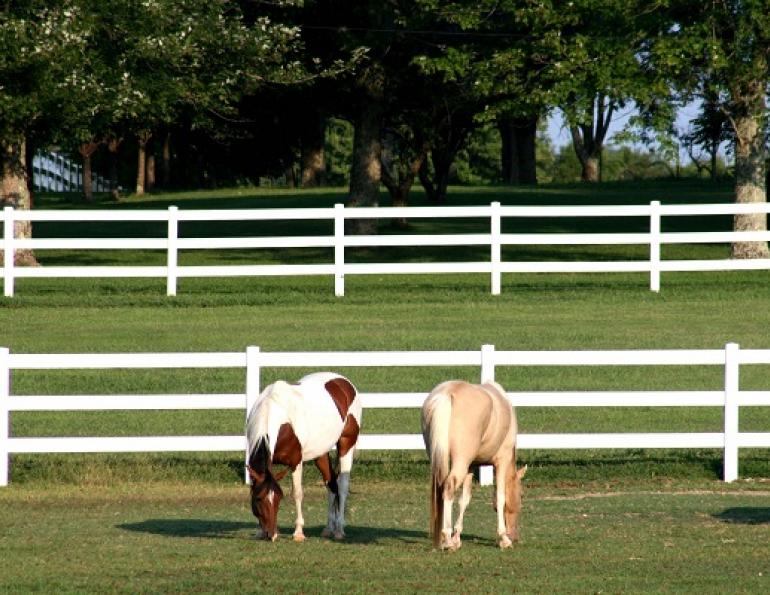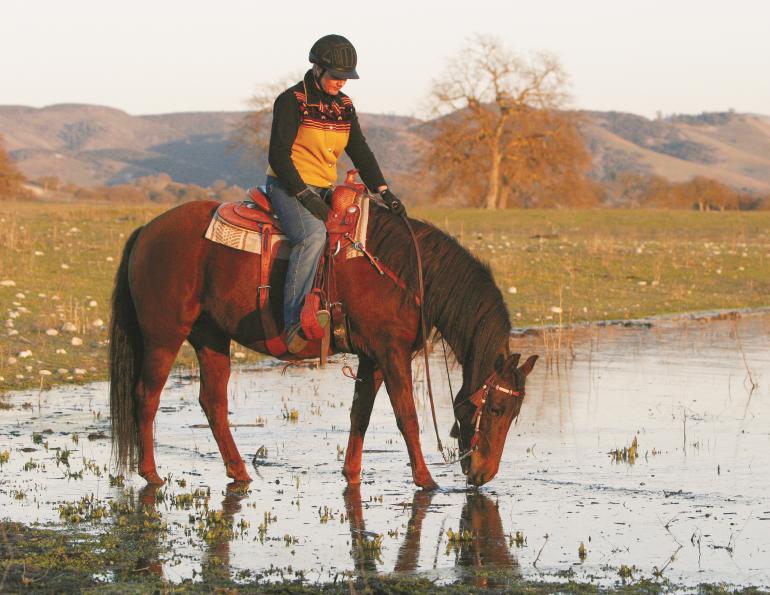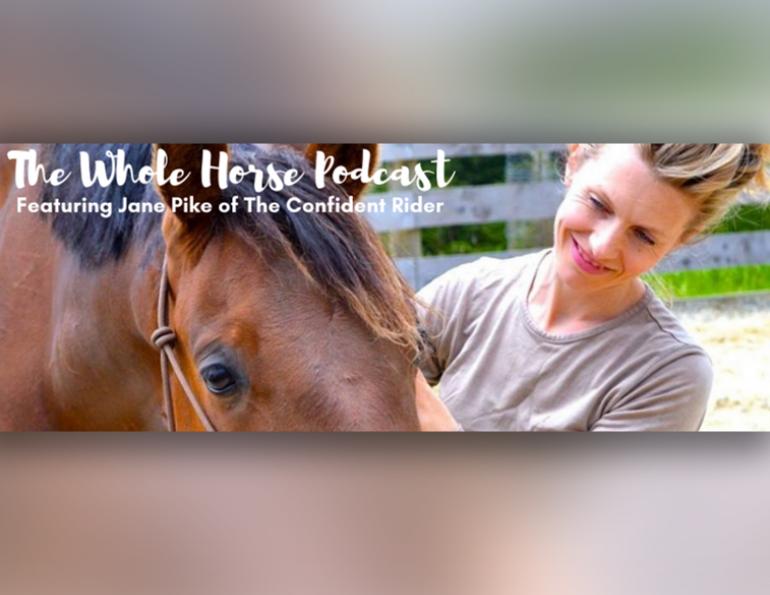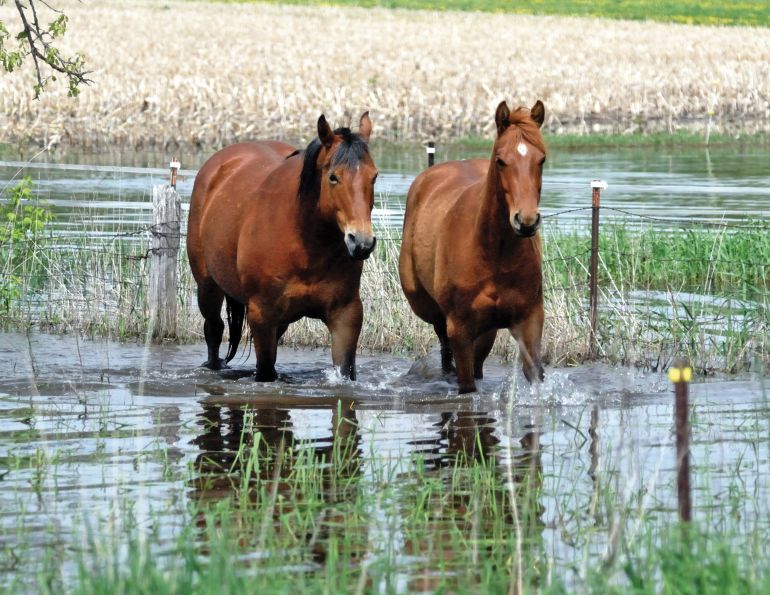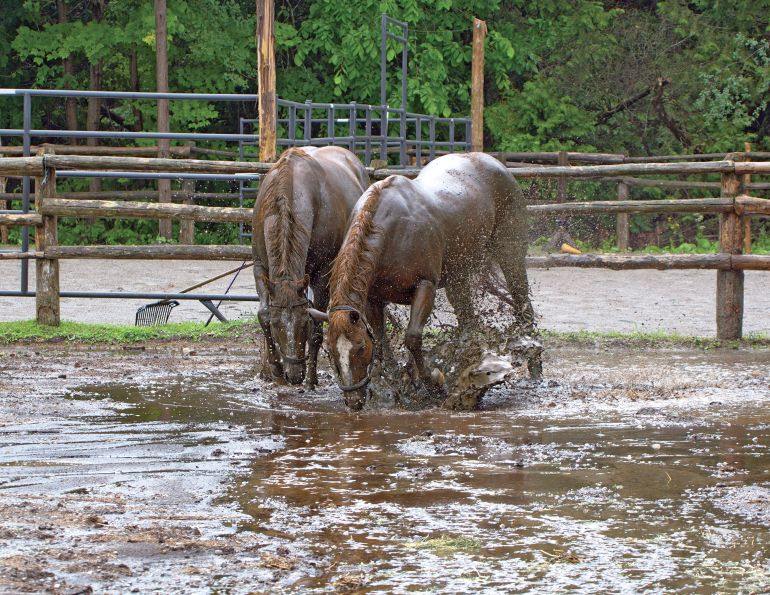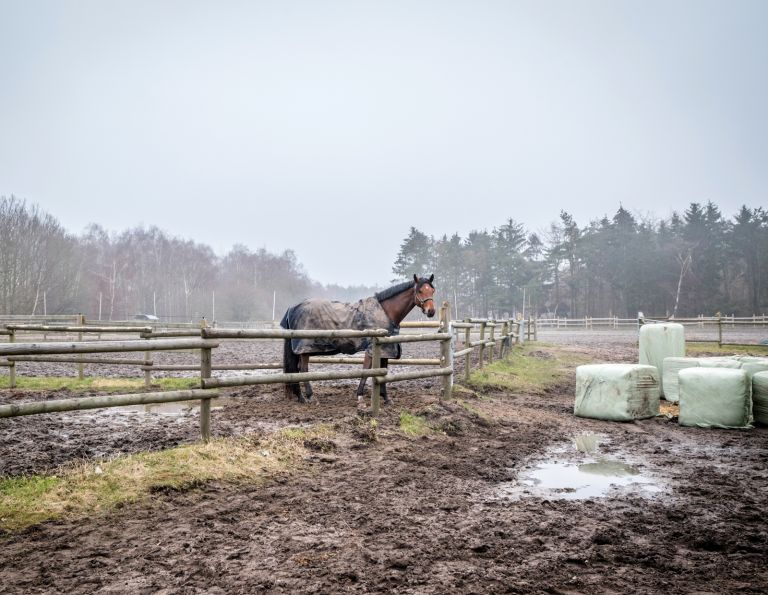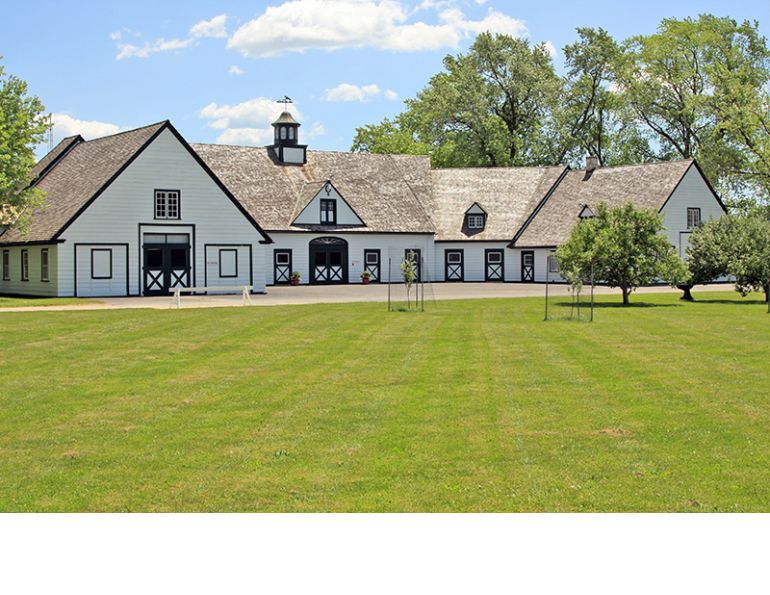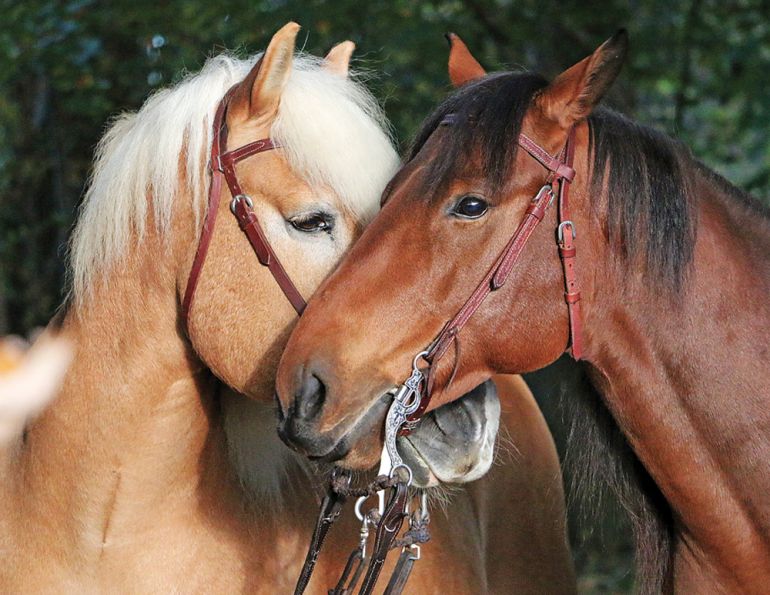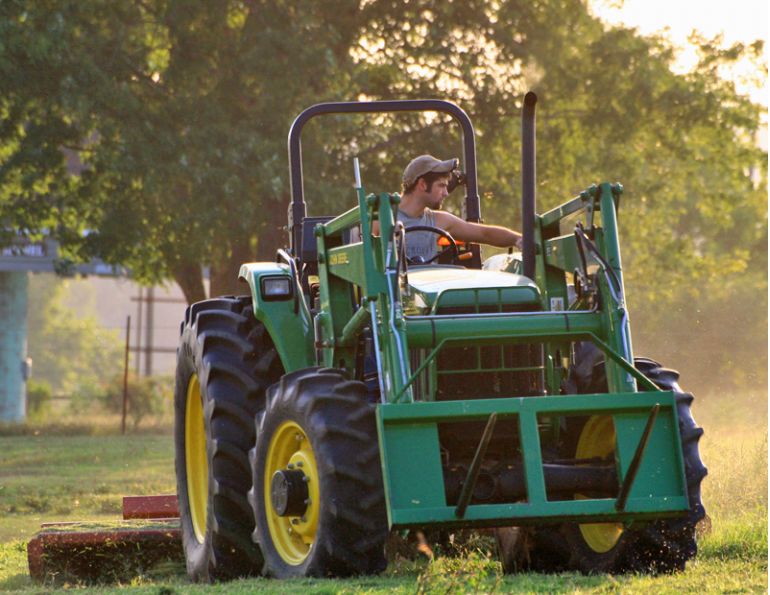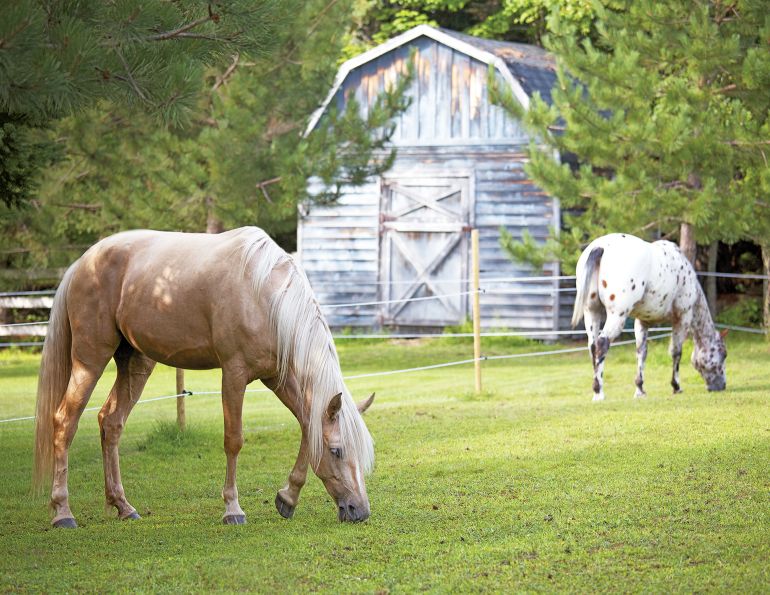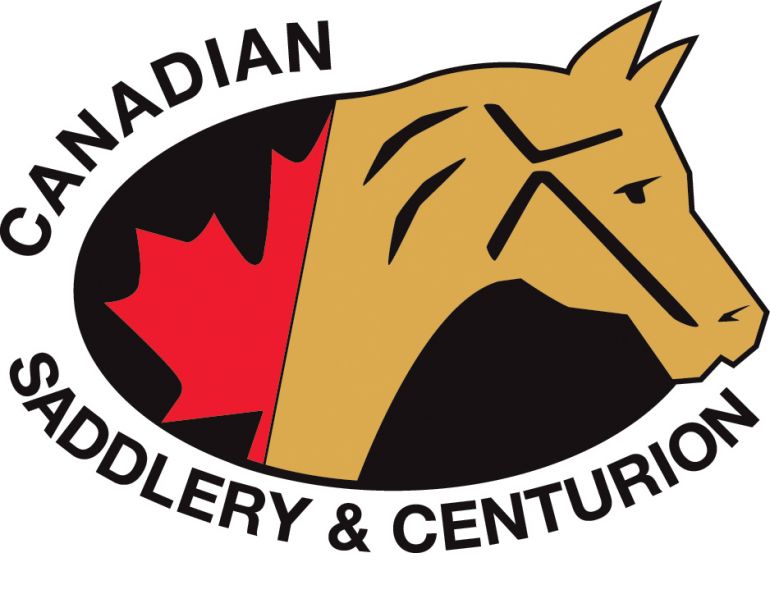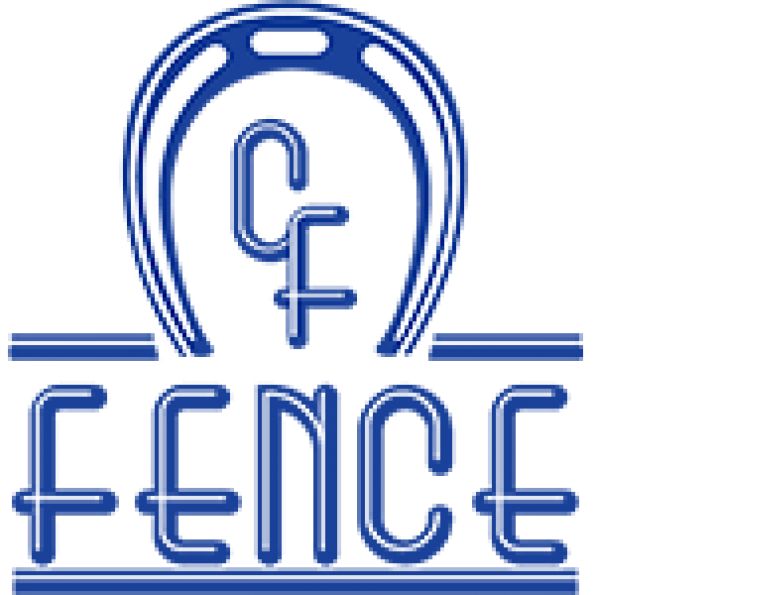By Margaret Evans
Consumers have never had so many quality options to choose from when it comes to fencing for their horses today. While consulting a fencing professional is priority, it helps to be clear on basic needs and an idea of design and layout. Making a checklist is a good place to start with some guideline questions to get the project rolling:
- How many horses will be in each paddock?
- Will you need paddocks for mares and foals, stallions, performance animals, and the additional stock or easy keepers?
- Will you want pathways between paddocks, fencing to keep out dogs or predators, or are you near a main road and require extra security?
- Are you buying/selling horses or providing board for horses that may require a dedicated fenced area?
- What is your budget?
- Will the fencing be for day turnout or 24-hour pasture containment?
- Do you want a portion of your fencing to be movable to access rotational grazing?
- How many gates and what sizes will you need – think animal, equipment, people here?
- How long do you expect your fence to last and what are the maintenance costs?
“There is no guarantee that a fence is 100 percent safe,” says Lesley Ferris co-owner of Ferris Fencing in Qualicum Beach, BC. “It does not exist. But some are safer than others. Do you have a legal perimeter fence (for your municipal jurisdiction)? Do you have other animals that can easily pass through wide spaced fences? If so, a good horse fence, which is the best predator control, is the two-inch by four-inch knotted mesh. Then cross fencing either permanent or temporary can easily be designed within the perimeter. Keep it as simple as possible and plan for ease of access for animal and vehicle movement.”
Think of the function of fences not only during the busy riding time from spring to fall, but during the more challenging times in winter. Consider how much snow you typically get, the equipment you use to move and pile it, and the accessibility of vehicles to the barn when snow becomes an issue. Will the fencing layout help or hinder environmental management during critical times?
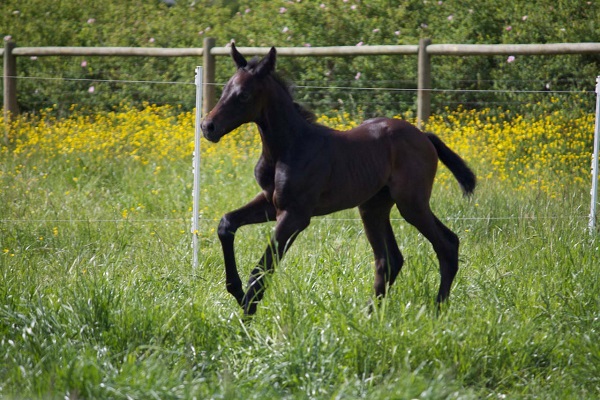

The foal inside the electric white polyshock wire on portable posts illustrates the use of electric fencing to keep animals away from the outer fence for safety reasons, and if the youngster encounters the fence it will break under pressure. This type of fencing is also popular for strip and rotational grazing. (Right/Left) Grazing paddocks are created using 1.5-inch electric tape on portable posts. Photos courtesy of Ferris Fencing.
“Make sure you have a site plan,” says Alan Cossentine of CF Fence in Oliver, BC. “Consider safety and the ability to custom make the product.”
Trevor Hins with Gardner Fence Systems in Minneapolis, Minnesota agrees. “Are you looking to gain aesthetic appeal for your property? How well will the fence perform for its intended use? Does the supplier offer a warranty? If so, how long and for what coverage?”
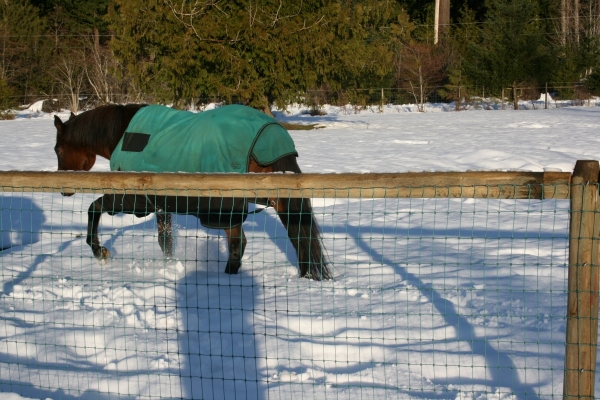
Closely woven two-inch by four-inch vertical mesh pattern is designed for predator control and to prevent horses, cows, or other hoofed animals from stepping through or “walking up” the fence. Photo courtesy of Ferris Fencing.
Hins emphasizes that fence safety starts with selecting the proper fence for the application. The need for planning is crucial in considering layout and function before putting posts in the ground. The next step is the proper installation of the fence.
A good fence starts with planning to determine layout and function, which helps to define the proper fence for the application. Aesthetically appealing, this four-rail vinyl fence is clearly visible, and features rounded corners to encourage movement and prevent horses from being trapped by dominant members of the herd. Photo courtesy of Gardner Fence.
“As far as animal safety, think about the potential issues if the animal is spooked,” he says. “What is the result with a metal fence, vinyl, barbwire, wood, etc.?”
Contrary to popular belief, horses will not avoid poor or dangerous fencing simply because they have a large area to move around in. Barbed wire is an extremely poor choice for horses, and especially for inquisitive foals, because of its low visibility and high risk of causing devastating and life-threatening injuries.
“Safety is the number one issue (with customers),” says Brenda Lennox with System Fencing in Rockwood, Ontario. “(Then) visibility, low maintenance, (and specific) livestock needs. Certain areas need predator fence and wire mesh fencing is the best for that.”
The gate design will be an important factor – gates for horses, vehicles, trailer, equipment, and small gates for people entrances. They should be hung where there is adequate access for all anticipated sizes of equipment and vehicles with a straight-line approach. The gate should be hung high enough so that it does not freeze to the ground during winter blizzards. In below-freezing temperatures, the ground will heave with ice which can hinder the accessibility of a turn out pasture if the gate won’t open freely.
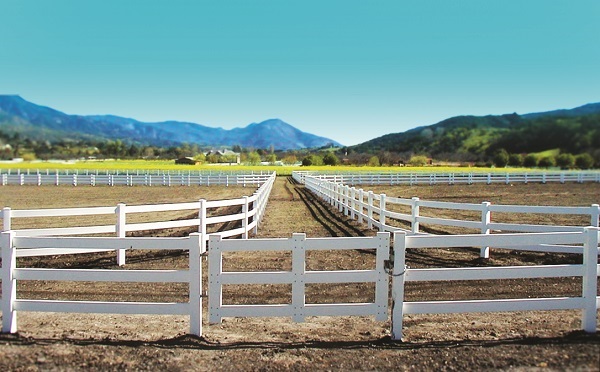
Gates should be positioned with enough clearance to allow for snow and ice build-up in winter, with level ground on both sides of the approach to help prevent vehicles from sliding into the gate posts in icy conditions. Photo: Gardner Fence.
“Some key things to think about when choosing your new equine fence are safety of your animals, strength, life expectancy, annual maintenance costs, and appearance,” says Bill Trott of the former Canadian fencing company Woodguard Canada. “Polymer coated wood rail fencing has been our number one best seller because it addresses all key points.”
Polymer coated wood rail fencing has a solid wood core treated with organic certified borate for protection against dry rot, termites, and fungus. The polymer is non-toxic and available in a range of colours. Photo courtesy of Woodguard Canada.
Trott says that the wood is treated with an organic certified borate treatment and the polymer is non-toxic. Since it does not fade, chip, peel, crack, or splinter, polymer coated lumber products reduce the need for repair and replacement. As a bonus, the product comes in different colours.
“It is strong,” says Trott. “With the solid wood core, the product is 100 percent structural and no reinforcements are needed for support. It’s backed with a 20-year warranty.”
Before and after photos of a fence installation by Woodguard Canada, with the attractive new fence framing and complementing the other improvements to the property. Photos courtesy of Woodguard Canada.
The nature and behaviour of horses make them unique livestock to contain. Their natural instincts as a flight animal living in a hierarchical society make not only fencing concerns more challenging, but the amount of space to be contained by the fencing structure more critical. A paddock that is too small for the number of horses it contains can lead to injury. Horses need escape paths to move out of the way of dominant animals. An inability to move because of fencing restrictions can risk an animal getting kicked or bitten.
Consider your good trees and ones that will provide natural shade. Take note of how the sun tracks and throws shadow that will provide welcome shade during hot days then plan your layout to include that shadow inside the fenced area. Shade offers great relief not only from heat but from flies.
“Because of the natural flight response of horses, they tend to injure themselves in fences more than most other livestock,” says Trott. “There are some things to consider when thinking about safely confining horses. In your selection process you need to pick a fence that is safe, fits your budget, and is low maintenance. How much importance is placed on each function depends on the owner’s budget, the value of the animals, and your priorities. A number of alternatives are available for consideration. Look for a fence that has some give (flexibility) as this will minimize injury when a horse accidentally runs into it. (The fence should have) high visibility and be as tall as the horse. (This) will usually help the animal avoid running into a fence if it sees it. (It must be) durable and strong and will hold up when leaned on. Whatever fence system you choose, check it regularly as no fence is maintenance free and acts of God can happen to the best of fences.”
Paddocks that have tight, square corners or corners less than 90 degrees are invitations for entrapment by a horse trying to avoid another. A fencing design should try to eliminate those corners by contouring them to allow a smoother flow of movement.
Neighbouring horses visiting over the fence encourage pacing, leaning, and pushing against the barrier which leads to damage or injury. If horses are to be fed in the pasture due to lack of grass then there has to be enough space to spread out the hay so that there are more piles than horses, or an adequate number of feeding stations so that all animals get a chance to feed. Dominant horses will eat first and sometimes chase others away. That can result in those animals lower down the pecking order not getting adequate food.
Mares with foals need special attention. While the broodmare is strictly focused on her offspring, the foal is a natural born explorer. But there are dangers in intermingling with the band too early and separation anxiety can lead to injury. Dedicated turnout paddocks for the broodmare and foal are essential for safe management. Paddocks need to be roomy and not necessarily big, but they must be secure with fencing materials that will not catch a foal’s flying feet.
Flex Fence from System Fencing is available in white, black, and brown, in widths of one, four, and five inches. It can be used in combination with other fencing, such as mesh or electric or wire as shown, and can also be used as a top rail only for sight lines on wire or electric fences. Photos courtesy of System Fencing.
Lennox says that their top sellers are flex fencing, traditional oak board fencing, and electric fencing. The traditional board fencing is still popular and while requiring a bit more maintenance in the long haul, still provides a desirable rustic look.
“Flex fencing is made specifically for the equine industry,” she says. “It provides a strong barrier that is highly visible with the added safety of flexing upon impact. It is low maintenance, has a strong break strength and long life. Oak board fencing is a highly visible fence system that is easy to install and gives you the ranch style look that has been around for as long as we can remember. Electric fencing includes performance braided rope, Protek Electric rope or the Hotcote Electric. It’s a more economical fence-line that gains the horses’ respect. These systems can be a stand-alone for containment or used in combination with many other fence systems to prevent chewing or playing over the fence lines.”
Before and after photos of a fence installation by Gardner Fence show the stringline to confirm the proposed fence line, which is straight and clear of debris. The attractive new fence features open corners so horses can avoid entrapment and allows sufficient space around the existing shelter. Photo courtesy of Gardner Fence.
Horses, being the social animals they are, are instinctively attracted to their neighbours, so visiting over the fence is a natural behaviour. But it can lead to squeals, squawks, kicks and bangs and sometimes injury.

Traditional oak board fencing is undeniably a beautiful option. Photo courtesy of System Fencing.
“Too small a space containing the animal, no availability of grazing which encourages them to chew, leaning and rubbing on fences, fighting through the fences with their neighbours, or pacing alongside the fences because of boredom (can) lower the ground level and eventually loosen the posts as the depth decreases,” says Ferris. “(This) causes a major problem with dust which the horse automatically loves to roll in. (But it) becomes a disaster if the horse becomes cast in the fence.”
Hins says that the biggest stressors on a fence are its environment and the animals in it, people included. “That is why we have focused on the vinyl fencing products as they have proven durable in all weather conditions.”
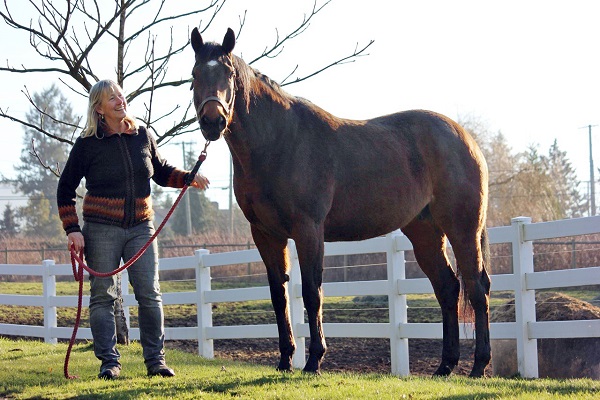
Photo (above): This attractive vinyl post and rail fence has a line of white polywire electric to keep horses off the fence and from reaching through for grass. Photo courtesy of Ferris Fencing.
CF Fence offers the farm and ranch community fencing made with ripple pipe construction, which eliminates maintenance and is weather and livestock resistant. The fence sections are created from 1 5/8-inch galvanized pipe in 21-foot lengths, with standard continuous sections with from three to six rails, standing 48 inches high. One end of the rail is shaped to fit into the full end of the next pipe, and rails are welded in place and secured to treated posts with conduit clamps. CF Fence’s website describes their products as very horse friendly, explaining that the unique ripple pipe construction eliminates cuts and scrapes to livestock. Their product line can be customized to suit individual needs of farmers and ranchers.
Wooden plank fences are vulnerable to sun and rain. Excessive drying and rotting can lead to rapid deterioration and major maintenance while exposed nails can cause injuries.
Wooden fences are very aesthetically pleasing but require more maintenance, says Ferris. “But if using wood it is a good suggestion to use round rails ‘the naturals’ i.e., not machined/lathed where the cambium layer is destroyed allowing cracking and bowing to occur. If using wooden rails a maximum of ten-foot post spacing is imperative but it definitely engineers and looks better at eight-foot spacing. The fence is only as good as the management of the animals and the install (as well as) monitoring and, if necessary, maintenance of the fence.”
For the horse industry, Ferris says that electric systems, two-inch by four-inch mesh, flex fence, polymers, and vinyls are their top sellers. Electric fencing has wide appeal for containment of all species of livestock and it will equally well keep predators out.
“Electric fencing has become the number one system in sales,” says Ferris. “Electric fencing not only protects your livestock, it protects your existing or permanent fencing and is an effective stand-alone fence - a win-win situation for the animal and your pocketbook. The consumption of power by an electric fence system is very low – pennies a day. Remember that electric fence is higher voltage with low milli-amps. Household current is the reverse and it is the amps that rack up the bills and are the danger in electricity. Electric fence saves money in that you can easily rotate pastures to gain feed, give the animal more room to play and graze which keeps them healthier, and protect other crops being grown to feed your animals (and family). It is very important to be sure that everything is working properly, effectively, and safely (and) you must have a decent fence tester to check, monitor, and troubleshoot the fence.”
Hins agrees with this.
“I think electric has a stable base of support in the market,” he says. “People either seem to love it or don’t believe in it. With electricity you are always taking on an element of risk, but the major players in electric fencing have longstanding reputations to protect which is ultimately good for the consumer.”
Today’s consumer has an excellent variety of products to choose from. Vinyl fencing is extremely popular, whether three-rail or four-rail, and high and bright enough for horses to see it clearly. As Hins says, it can be used with electric making it ideal for hotwire usage with cattle and aggressive horses. “You can drill directly into the rails and posts to attach wire mesh for goats, alpacas, llamas, etc.”
A beautiful fence has huge aesthetic appeal and, more importantly, adds to property value. But the style and design of the fence is always dictated by the kind of animals being contained, and their inherent behaviours.
Thank you to the following businesses for their assistance with this feature:
Ferris Fencing: www.ferrisfencing.com
Gardner Fence Systems™: www.gardnerfence.com
CF Fence: www.cffence.com
System Fencing Stalls & Equipment: www.systemfence.com
Main photo: ©CanStockPhoto/S Dicks



